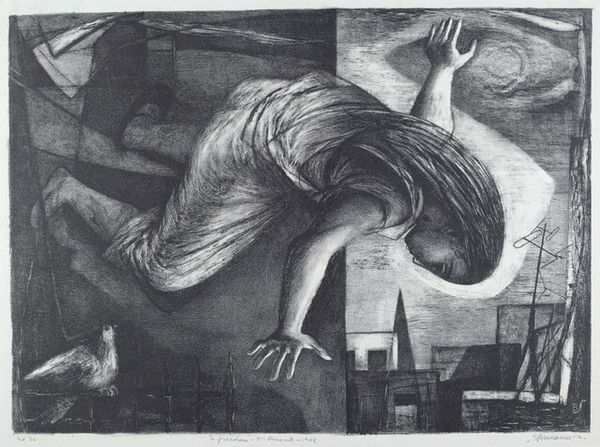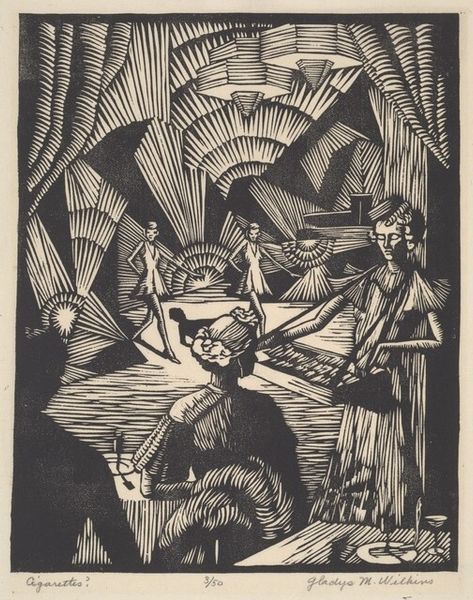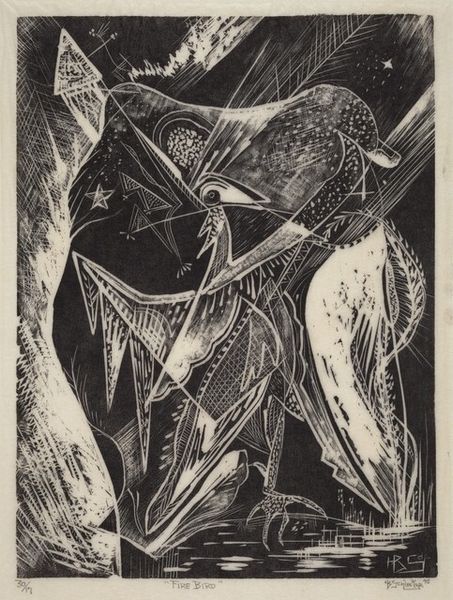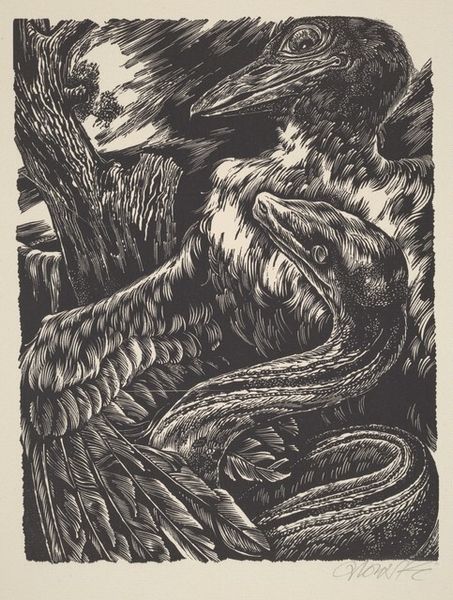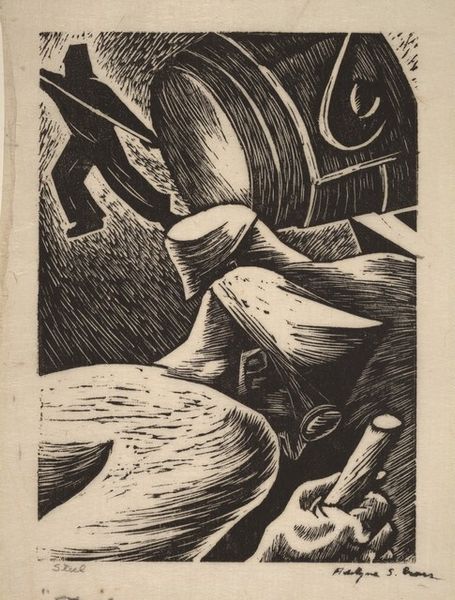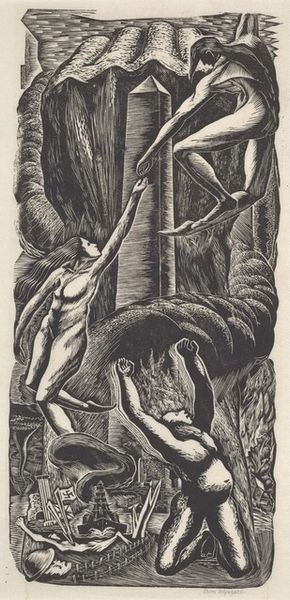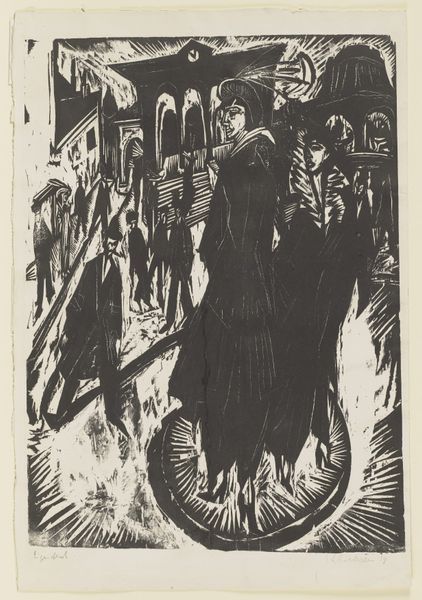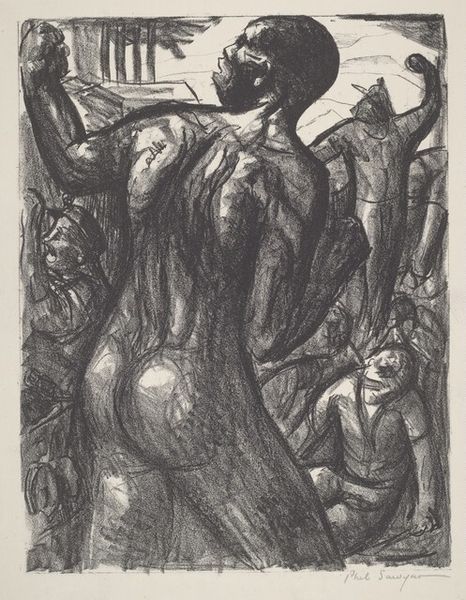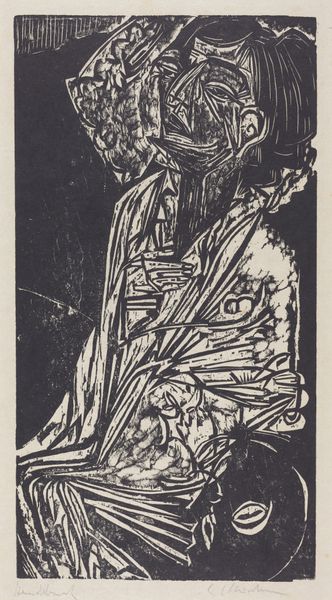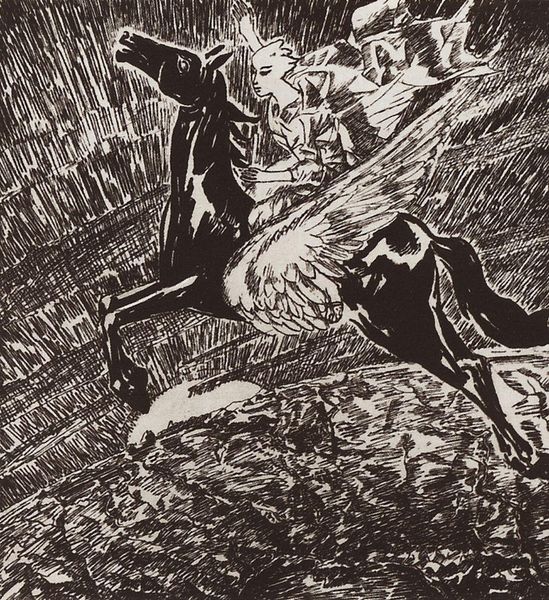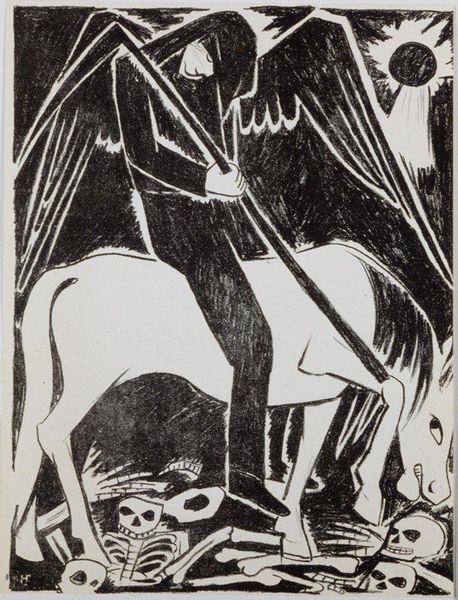
Dimensions: image: 46.6 x 30.4 cm (18 3/8 x 11 15/16 in.) sheet (irregular): 52.2 x 37.3 cm (20 9/16 x 14 11/16 in.)
Copyright: National Gallery of Art: CC0 1.0
Editor: This is James Lesesne Wells' woodcut, "Icarus," created in 1968. The black and white is striking, really emphasizing the dramatic fall. The detail is amazing, too. What stands out to you? Curator: I see a potent blend of classical myth and contemporary commentary, especially considering its creation in '68. Icarus, perpetually a symbol of hubris, plummeting not into open sea, but towards a town of rigid, almost claustrophobic structures. What could that symbolize? Editor: Maybe the stifling constraints of society? Or the fall from grace into the everyday world? Curator: Precisely. The very sharp contrast and density of line lend a palpable sense of anxiety and impending doom. Notice the figure’s face—it’s a portrait of despair and dawning comprehension. I see a comment about the promises and pitfalls of progress, and perhaps about the burden of unrealized dreams on an individual. Editor: It’s so much more than just a depiction of a myth. The details make it speak to so many different interpretations. Curator: Right. Woodcuts themselves carry historical weight. In Wells' hands, a traditional medium conveys a very modern feeling of alienation. How does that tension inform our understanding of the symbol? Editor: That’s fascinating! It layers another dimension on it: a story retold through a classical technique and given new meaning in a modern context. Thanks for pointing out those symbols! Curator: My pleasure! Symbols gain richness when examined through many contexts and are always shifting in response to historical changes.
Comments
No comments
Be the first to comment and join the conversation on the ultimate creative platform.

